|
|
 
 The Roman Banquet: Images of Conviviality The Roman Banquet: Images of Conviviality 
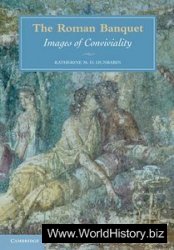 The Roman Banquet: Images of Conviviality Author: Katherine M. D. Dunbabin Cambridge University Press 2010 ISBN: 978-0521127301 Pages-13: 319 Language: English Format: PDF Size: 81 MB Drawing frequently upon ancient inscriptions as well as other archaeological material, Katherine Dunbabin studies the representations of the banquet in Roman painting, mosaic, sculpture, and the minor arts, and compares them to archaeological evidence as well as written sources. She discusses the history of dining practices and the evolution of the iconography of dining. By highlighting the artistic and archaeological evidence, Dunbabin offers a more well-rounded picture of the role of the Roman banquet than can be found in literary sources alone.
 
 The history of the decline and fall of the Roman Empire Volume 2 The history of the decline and fall of the Roman Empire Volume 2 
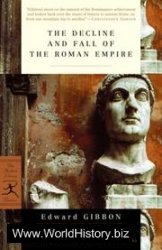 The history of the decline and fall of the Roman Empire Volume 2 Phillips, Sampson Author: Gibbon, Edward 1854 Pages: 593 Format: PDF Size: 63 mb Language: English Spanning thirteen centuries from the age of Trajan to the taking of Constantinople by the Turks, DECLINE & FALL is one of the greatest narratives in European Literature. David Womersley's masterly selection and bridging commentary enables the readerto acquire a general sense of the progress and argument of the whole work and displays the full variety of Gibbon's achievement.
 
 Maya Imagery, Architecture, and Activity: Space and Spatial Analysis in Art History Maya Imagery, Architecture, and Activity: Space and Spatial Analysis in Art History 
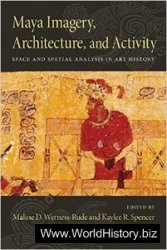 Maya Imagery, Architecture, and Activity: Space and Spatial Analysis in Art History Author: Maline D. Werness-Rude, Kaylee R. Spencer University of New Mexico Press 2015 ISBN: 082635579X Pages: 432 Language: English Format: PDF Size: 35 MB Maya Imagery, Architecture, and Activity privileges art historical perspectives in addressing the ways the ancient Maya organized, manipulated, created, interacted with, and conceived of the world around them. The Maya provide a particularly strong example of the ways in which the built and imaged environment are intentionally oriented relative to political, religious, economic, and other spatial constructs. In examining space, the contributors of this volume demonstrate the core interrelationships inherent in a wide variety of places and spaces, both concrete and abstract. They explore the links between spatial order and cosmic order and the possibility that such connections have sociopolitical consequences. This book will prove useful not just to Mayanists but to art historians in other fields and scholars from a variety of disciplines, including anthropology, archaeology, geography, and landscape architecture.
 
 The Vikings: A History The Vikings: A History 
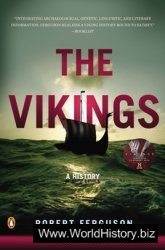 Author: Robert Ferguson The Vikings: A History Penguin Books 2009 Format: epub/pdf Size: 5.3 Mb Language: English From Harald Bluetooth to Cnut the Great, the feared seamen and plunderers of the Viking Age ruled Norway, Sweden, and Denmark but roamed as far as Byzantium, Greenland, and America. Raiders and traders, settlers and craftsmen, the medieval Scandinavians who have become familiar to history as Vikings never lose their capacity to fascinate, from their ingeniously designed longboats to their stormy pantheon of Viking gods and goddesses, ruled by Odin in Valhalla. Robert Ferguson is a sure guide across what he calls "the treacherous marches which divide legend from fact in Viking Age history." His long familiarity with the literary culture of Scandinavia with its skaldic poetry is combined with the latest archaeological discoveries to reveal a sweeping picture of the Norsemen, one of history's most amazing civilizations. Impeccably researched and filled with compelling accounts and analyses of legendary Viking warriors and Norse mythology, The Vikings is an indispensable guide to medieval Scandinavia and is a wonderful companion to the History Channel series.
 
 Empire of Alexander the Great Empire of Alexander the Great 
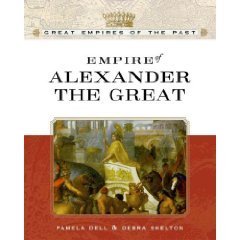 Author: Debra Skelton, Pamela Dell Empire of Alexander the Great Facts on File 2005 Format: pdf Language: English Size: 7,97 mb Empire of Alexander the Great looks at what made Alexander a brilliant military tactician and a charismatic leader. It also explores what the Eastern world learned through contact with Alexander and what Alexander brought the West from the Persian Empire. Connections in our own world to Alexander's empire include the legend of the Gordion Knot, pearls, the Egyptian metropolis of Alexandria, and the Septuagint (the first translation of the Torah from Hebrew).
 
 Mesopotamian archaeology Mesopotamian archaeology 
Mesopotamian archaeology; an introduction to the archaeology of Babylonia and Assyria.
Author: Percy Stuart Peache Handcock
1912
New York, Putnam
Pages: 423,
Format: DJVU
Size: 15,0 mb (+3%)
Language: English
Read Full Post
 
 A History of Ancient Rome A History of Ancient Rome 
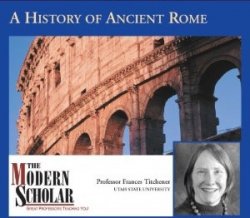 A History of Ancient Rome Author: Prof. Frances B. Titchener Recorded Books, LLC 2003 Pages: 96 Format: PDF Size: 32 МБ Quality: Good Language: English Of all the civilizations that have ever been, none have inspired as much wonder and awe as Ancient Rome. No society since has replicated the achievements nor enjoyed the longevity that the Roman Empire did. Indeed Ancient Rome is among the greatest contributors to Western Civilization and culture. Among these contributions are the Julian Calendar, Romance (Roman based) languages, republican government, and formal spectacle sport. This course explores the world of Ancient Rome as students investigate important events and key figures of the epoch.
 
 Greek Bronzes in The Metropolitan Museum of Art Greek Bronzes in The Metropolitan Museum of Art 
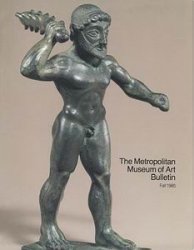 Greek Bronzes in The Metropolitan Museum of Art Author: Joan R. Mertens The Metropolitan Museum of Art Bulletin, v. 43, no. 2 1985 Pages: 68 Language: English Format: PDF Size: 28 MB
 
 The Scepter of Egypt vol. 1 and 2 The Scepter of Egypt vol. 1 and 2 
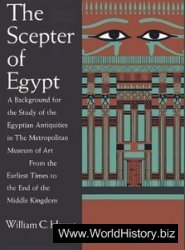 Author: William C. Hayes The Scepter of Egypt" vol. 1 and 2 Met.Museum of Art/Abrams 1978 ISBN: 0810938049 Language: English Pages: 421 + 496 Format: PDF Size: 93, 24 МБ A Background for the Study of the Egyptian Antiquities in The Metropolitan Museum of Art. V. 1. From the earliest times to the end of the Middle Kingdom. v. 2. The Hyksos Period and the New Kingdom (1675-1080 B.C.).
 
 Making Ancient Cities: Space and Place in Early Urban Societies Making Ancient Cities: Space and Place in Early Urban Societies 
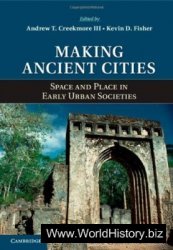 Author: Andrew T. Creekmore III (Editor), Kevin D. Fisher (Editor) Making Ancient Cities: Space and Place in Early Urban Societies Cambridge University Press 2014 Format: PDF Size: 19.7 Mb Language: English This volume investigates how the structure and use of space developed and changed in cities, and examines the role of different societal groups in shaping urbanism. Culturally and chronologically diverse case studies provide a basis to examine recent theoretical and methodological shifts in the archaeology of ancient cities. The book's primary goal is to examine how ancient cities were made by the people who lived in them. The authors argue that there is a mutually constituting relationship between urban form and the actions and interactions of a plurality of individuals, groups, and institutions, each with their own motivations and identities. Space is therefore socially produced as these agents operate in multiple spheres.
 
 Constantine and Rome Constantine and Rome 
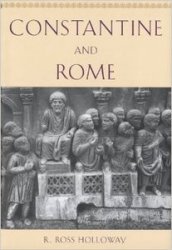 Constantine and Rome Author: R. Ross Holloway Yale University Press 2004 ISBN: 0300100434 Pages: 191 Language: English Format: PDF Size: 35 MB Constantine the Great (285-337) played a crucial role in mediating between the pagan, imperial past of the city of Rome, which he conquered in 312, and its future as a Christian capital. In this learned and highly readable book, Ross Holloway examines Constantine's remarkable building programme in Rome. Holloway begins by examining the Christian Church in the period before the Peace of 313, when Constantine and his co-emperor Licinius ended the persecution of the Christians. He then focuses on the structure, style, and significance of important monuments: the Arch of Constantine and the two great Christian basilicas, St. John's in the Lateran and St. Peter's, as well as the imperial mausoleum at Tor Pignatara. In a final chapter Holloway advances a new interpretation of the archaeology of the Tomb of St. Peter beneath the high altar of St. Peter's Basilica. The tomb, he concludes, was not the original resting place of the remains venerated as those of the Apostle but was created only in 251 by Pope Cornelius. Drawing on the most up-to-date archaeological evidence, he describes a cityscape that was at once Christian and pagan, mirroring the personality of its ruler.
 
 The Emperor and Rome: Space, Representation, and Ritual The Emperor and Rome: Space, Representation, and Ritual 
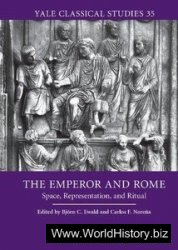 The Emperor and Rome: Space, Representation, and Ritual Author: Bjorn C. Ewald, Carlos F. Norena Yale University, Cambridge University Press Yale Classical Studies 35 2010 ISBN 13: 978-0521519533 Pages: 379 Language: English Format: PDF Size: 65 MB The transition from republic to monarchy with the accession of Augustus heralded the transformation not just of the Roman political system but of the city of Rome itself. This volume, written by some of the foremost scholars from around the world, addresses three main topics: the impact of imperial building programs on the configuration of space within the city and on the evolution of Rome's urban image; the various ways in which the figure of the emperor himself was represented, both visually and symbolically, in the city's urban fabric; and the performance of rituals and ceremonies that expressed key imperial ideals and values and enabled communications between the emperor and important collectivities in the city. The contributors build on important recent developments in research: increased archaeological excavation and restoration, the proliferation of digital technologies, and the greater attention paid by scholars to the centuries after Augustus.
 
 Pompeii Pompeii 
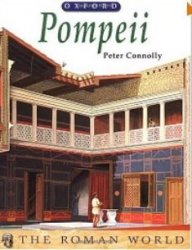 Pompeii (The Roman World) Oxford University Press Author: Peter Connolly 1994 Pages: 80 Format: PDF Size: 20 mb Language: English From the remarkable pen of Peter Connolly comes a comprehensive look at the ancient city of Pompeii. He begins with the scientific facts: How was Pompeii destroyed? How did Mount Vesuvius become an active volcano? What happened during the eruption? How long did Pompeii lay buried and how was it finally rediscovered? What was Pompeii's history before the disaster? Then, Peter Connolly does what he does better than anyone--he rebuilds the past in words and pictures, allowing us to imagine what it was like to live in old Pompeii. Like an archaeological detective, he sifts through the ruins and artifacts to reconstruct one area of the town in minute detail. With maps and cross-sections, photographs, drawings, and engrossing, fact-filled text, Connolly takes us into the very homes of its citizens--into the kitchens, atriums, bedrooms and out into the gardens. We learn what the furniture looked like, how the homes were lighted and heated, what kind of jewelry was popular, and what the gladiators wore. We view the varied styles of architecture and decoration, attend a grand dinner party, visit local shops, go to the theater, to a public bath, and to the gladiators' arena. We gain an understanding of this ancient civilization, and begin to see how much was lost when the city fell prey to the tons of lava and ashes that fell on it during the devastating disaster. The story of Pompeii is one of the most terrible and fascinating in history. Connolly brings it alive for children, adding another distinguished volume to Oxford's Rebuilding the Past series.
 
 The Cambridge World History of Slavery: Volume 1, The Ancient Mediterranean World The Cambridge World History of Slavery: Volume 1, The Ancient Mediterranean World 
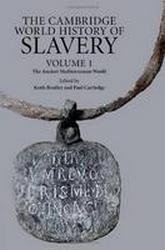 Author: Keith Bradley, Paul Cartledge "The Cambridge World History of Slavery: Volume 1, The Ancient Mediterranean World" C/U/P 2011 Pages: 632 ISBN: 052184066X Format: PDF Size: 10 mb Language: English Quality: Good Volume 1 in the new Cambridge World History of Slavery surveys the history of slavery in the ancient Mediterranean world. Although chapters are devoted to the ancient Near East and the Jews, its principal concern is with the societies of ancient Greece and Rome. These are often considered as the first examples in world history of genuine slave societies because of the widespread prevalence of chattel slavery, which is argued to have been a cultural manifestation of the ubiquitous violence in societies typified by incessant warfare. There was never any sustained opposition to slavery, and the new religion of Christianity probably reinforced rather than challenged its existence. In twenty-two chapters, leading scholars explore the centrality of slavery in ancient Mediterranean life using a wide range of textual and material evidence. Non-specialist readers in particular will find the volume an accessible account of the early history of this crucial phenomenon.
 
 Discover Ancient China Discover Ancient China 
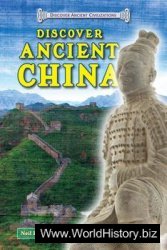 Discover Ancient China Author: Neil D. Bramwell Enslow Pub Inc Discover Ancient Civilizations 2014 ISBN: 1464403317 Pages: 104 Language: English Format: PDF (e-book) Size: 11 MB Confucius, the Great Wall, silk, oracle bones, writing, and paper are among the topics explored in DISCOVER ANCIENT CHINA. The book starts with Emperor Qin Shi Huangdi’s life size terracotta army of soldiers, chariots, and horses. The photographs show the army as it looks today and in the broken disarray of its discovery. The following chapters deal with early development, early dynasties, the unification of China, and the achievements, gifts, and inventions of the ancient Chinese.
 
 History of Rome (Vol. I, II, IV-VIII, XI, XIII) History of Rome (Vol. I, II, IV-VIII, XI, XIII) 
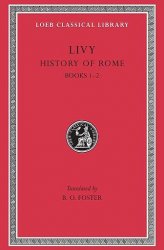 Author: Livy History of Rome (Vol. I, II, IV-VIII, XI, XIII) Harvard University Press The Loeb Classical Library Language: /English 1919, 1922, 1926, 1929, 1940, 1943, 1949, 1936, 1951 (Reprint 1967, 1967, 1969, 1978, 1968) Format: PDF Size: 228,79 mb 502 + 498 + 602 + 476 + 542 + 470 + 606 + 454 + 458
 
 Old Kingdom, New Perspectives: Egyptian Art and Archaeology 2750-2150 BC Old Kingdom, New Perspectives: Egyptian Art and Archaeology 2750-2150 BC 
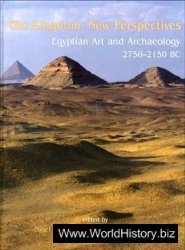 Author: Nigel Strudwick (Editor), Helen Strudwick (Editor) Old Kingdom, New Perspectives: Egyptian Art and Archaeology 2750-2150 BC Oxbow Books 2011 Format: PDF Size: 103 Mb Language: English Recent research on all aspects of the Old Kingdom in Egypt is presented in this volume, ranging through the Pyramid Texts, tomb architecture, ceramics, scene choice and layout, field reports, cemetery layout, tomb and temple statuary. The contributions also show how Egyptology is not stuck in its venerable traditions but that newer forms of technology are being used to great effect by Egyptologists. For example, two papers show how GIS technology can shed light on cemetery arrangement and how 3D scanners can be employed in the process of producing facsimile drawings of reliefs and inscriptions. The authors cover a wide range of sites and monuments. A large part of the work presented deals with material from the great cemeteries of Saqqara and Giza of the Old Kingdom capital city of Memphis but all the smaller sites are discussed. The book also includes a paper on the architecture of mastabas from the lesser-known site of Abu Roasch. The provinces are by no means overlooked, with articles on material from Deir el-Bersha, el-Sheikh Said and Akhmim. Between them, the authors discuss material from the milieu of the king right down to that which concerned the tomb workmen and those who supplied their basic needs, such as bakers, brewers and potters. Containing papers presented at a conference at the Fitzwilliam Museum, Cambridge in May 2009, this book continues a series of publications of the latest research presented at previous meetings in Paris, Berlin and Prague. Much new material is published here and the papers are fully illustrated, with over 200 photographs and drawings.
 
 Gods and Heroes in the Athenian Agora Gods and Heroes in the Athenian Agora 
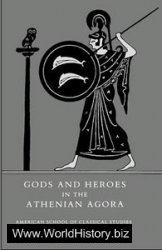 Gods and Heroes in the Athenian Agora(Agora Picture Book 19) Author: Camp, J. American School of Classical Studies 1980 ISBN: 0876616236 Format: PDF Size: 10 mb Language: english Religion played a part in almost every aspect of civic life, so shrines, temples, altars, and dedications are conspicuous at almost every turn during a visit to the Agora. The author of this booklet shows where and how the major Olympian gods were worshipped, and then turns his attention to lesser known deities, such as Hekate, the triple-bodied goddess of the crossroads. He argues that the cults of heroes, such as Theseus, one of the legendary founders of Athens, were much more popular than the official state religion focused on the Olympian gods.
 
 The Senedjemib Complex, Part 1 The Senedjemib Complex, Part 1 
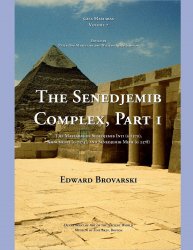 Author:Edward Brovarski The Senedjemib Complex, Part 1 Museum of Fine Arts, Boston 2000 Format: pdf Size: 169.02 MB Language: English In 1901 the Egyptian Antiquities Service granted permits for scientific excavations at the royal pyramids and private mastaba tombs of Giza. The American team trader archaeologist and museum curator George Andrew Reisner (1867-1942), became the Joint Egyptian Expedition of Harvard University and the Museum of Fine Arts, Boston, in 1905, and continued almost uninterrupted until 1942. Despite the publication of his monumental History of the Giza Necropolis I-II, Reisner was unable to begin the tomb-by-tomb publication series he originally envisioned. This task was initiated by William Kelly Simpson in the early 1970s in the form of the Giza Mastabas Series. The goal of the project is to continue and complete the publication of Reisner's excavations at Giza, fully documenting the mastaba tombs with descriptive text, hieroglyphic translations, facsimile line drawings, plans, sections, and photographs.PThis book presents an account of the excavation of Senedjemib Inti (G2370), Khnumenti (G2374) and Senedjemib Mahi (G2378). Excavations in 1912-13 revealed that the three tombs formed part of a great complex of family tombs erected around a paved court, and that four generations of the Senedjemib family served as viziers of Egypt and royal architects over a hundred year period in the later old Kingdom. The tombs document changes in tomb architecture and decoration from the end of the fifth dynasty to the end of the sixth. Additionally they contain two lengthy autobiographical inscriptions.
|
|
























 World History
World History









